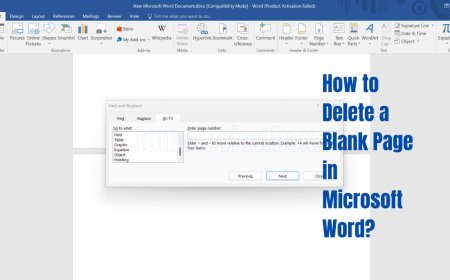What is Mezzanine Financing? - Definition, Characteristics, and Benefits
Discover what mezzanine financing is, its key features, benefits, and how it can enhance your capital structure effectively.

Key Takeaways
- Mezzanine financing has the qualities of both debt and equity. It’s one that companies frequently turn to when they pursue fast growth after hitting the limit on their senior debt capacity.
- It comes with flexible repayment terms, such as interest-only payments. You can select tailored plans based on your cash flows, so it works great with your specific financial situation.
- For real estate deals, mezzanine financing is used to raise extra capital for acquisitions and developments, filling the space between equity and senior debt.
- This strategy allows companies to raise money without surrendering any ownership shares. High-interest rates, sometimes at 20%, make the cost of borrowing much more expensive and increase the risk associated with borrowing.
- Mezzanine financing is perfect for situations such as mergers, acquisitions, or strategic growth projects where typical funding options fail.
- High-growth, capital-intensive industries such as real estate, healthcare, and technology often utilize mezzanine financing for this reason.
Mezzanine financing is a specialized funding source that combines aspects of standard debt and equity. It usually only becomes necessary when companies cannot raise enough capital from traditional banks or other lenders. Located between senior debt and equity in the capital stack, it represents a truly flexible solution for those companies looking to fund growth or an acquisition.
Borrowers appreciate its capacity to fill funding voids without ceding complete control. Either way, lenders tend to earn higher returns because they take on more risk. Usually seen in commercial real estate and expanding companies, mezzanine financing is unique in its versatility.
By getting a grasp on its structure, businesses can figure out whether it would serve their financial objectives. Simultaneously, this understanding creates an opportunity for investors to unlock potentially outsized returns.
What Is Mezzanine Financing?
1. Definition of Mezzanine Financing
Mezzanine financing is a hybrid funding option that combines aspects of debt and equity. It’s meant for businesses looking to grow but that have already hit the ceiling on regular senior debt. Unlike secured loans, mezzanine financing is usually issued with unsecured loans, meaning there is no collateral securing it.
Debt investors get long maturities with interest-only payments for a significant portion. This alternative provides much more flexibility to companies that may not have the cash flow right away. Another feature is the embedded warrants. These give lenders the right to convert debt into equity if the borrower defaults.
This dual nature of mezzanine financing is what makes it such a unique and strategic tool for funding long-term growth.
2. Key Features of Mezzanine Financing
Mezzanine capital comes with steep interest rates that usually run between 12% and 20%. In some cases, these rates can even jump up to 30%. Though more expensive, it provides advantages such as looser financial covenants, less amortization, and fewer restrictions compared to bank loans.
It usually makes up around 15-20% of the capital structure and matures in five years or more. The structure is highly customizable to fit the company’s cash flow. This structure allows for seven to eight years of interest-only payments.
In exchange, lenders are willing to take on more risk, as this financing is often unsecured and subordinate to senior debt. In exchange, they receive the possibility of equity conversion.
3. How Mezzanine Financing Works
Obtaining mezzanine financing takes some advance planning and skillful negotiation. Companies begin the process by creating a growth plan that lays out their short and long-term objectives and capital requirements.
During settlement negotiations, lenders carry out a process called due diligence to weigh risks vs. Opportunities. The terms often have covenants to set parameters for financial expectations.
These covenants are usually much less restrictive than what is required for senior debt. These covenants balance lender security with borrower flexibility, making mezzanine financing a practical option for companies looking to scale without overly restrictive terms.
Mezzanine Financing In Real Estate

1. Definition in real estate context
Mezzanine financing in real estate represents a very powerful funding technique. It offers additional capital above and beyond conventional mortgage loans. It acts as an important bridge between equity and debt.
When senior loans aren’t enough to cover a project’s funding requirements, this form of financing comes in to provide the difference. This type of financing is a real estate investor’s trump card. It strengthens their leverage, enabling them to undertake bigger and bolder projects without putting their own money at risk.
If a developer were to acquire a multi-family property for $10 million, they would likely get a senior loan of $6 million. They would then put $2 million of their own equity into the deal.
Mezzanine financing can fill the gap with that last $2 million, making sure the project doesn’t fall victim to a waiting game. This specialized structure offers an opportunity for investors to access critical funding without losing their equity position.
2. Role in real estate transactions
Often overlooked, mezzanine financing is a critical part of large-scale real estate acquisitions and developments. It delivers the missing capital for larger deals that need it most, particularly where alternative funding options are lacking.
This is especially crucial in times of refinancing or recapitalization, where liquidity is necessary to cover calls on financial obligations. In fact, during construction, developers experience significant cash flow pressures as they incur high upfront costs before revenue is realized.
Mezzanine loans can fill this gap, allowing work on a project to proceed without interruption. In commercial real estate, a developer building a new office complex would frequently employ mezzanine financing.
This approach allows for the continued coverage of contractor labor and material costs until tenants start bringing in revenue. This flexibility is what makes mezzanine such a useful tool for keeping project momentum.
3. How it differs from other financing
Mezzanine financing is riskier for lenders than conventional bank loans. In turn, interest rates skyrocket, usually from 12% to 20% and up to as much as 30%. Senior loans need collateral, like the property you’re trying to buy.
Unlike first-position loans, mezzanine loans provide lenders with an immediate stake in ownership through equity stakes or warrants in the event of a default. With a repayment structure that provides much more flexibility than traditional financing, loans typically have interest-only payments with terms ranging from 1-5 years, with options available to go out as far as 10 years.
Blending characteristics of both debt and equity, mezzanine financing is a hybrid between the two. This special feature gives investors the ability to lower their required equity, greatly boosting their ROR (rate of return).
In other words, a developer can leverage their equity contribution of a $10 million property down from $4 million to only $2 million. By playing the same game with mezzanine financing, they can multiply their possible profits nearly tenfold.
Advantages Of Mezzanine Financing

1. Flexible Repayment Terms
Perhaps the most unique aspect of mezzanine financing is its flexible debt repayment terms. One important feature is the interest-only payment structure. This can be a huge relief on cash flow, especially for companies in their rapid growth stage.
Borrowers typically have the flexibility to negotiate repayment schedules that fit their unique financial condition or project cycle. For example, a company launching a long-term construction project may negotiate deferred principal payments until the project starts generating revenue.
This added flexibility allows businesses to better meet their obligations. Consequently, mezzanine financing is an efficient solution for complex capital needs.
2. Access to Additional Capital
Mezzanine financing offers businesses an important source of funding at a time when conventional sources, such as bank loans, have maxed out. Through this method, growing companies can raise the capital they need without diluting their ownership interest by issuing new equity instruments. This funding strategy is most effective when directed at strategic objectives like mergers, acquisitions, or expansions into new markets, making it a favored option among mezzanine investors.
Companies are able to use mezzanine loans to help bridge the gap in their current financing. This type of debt financing provides additional funds that allow them to meet their capital needs and scale their operations effectively. Its unique ability to fill these gaps is what makes it such a powerful tool for companies to pursue growth opportunities without large roadblocks.
In addition, real estate mezzanine loans can be particularly advantageous for businesses looking to invest in property. By utilizing mezzanine loan financing, companies can access the necessary capital while maintaining their senior debt capacity, ensuring a balanced capital structure that supports future growth initiatives.
3. Retaining Ownership Control
For business owners, especially those who are entrepreneurs or small business owners, control is usually an overriding concern. Mezzanine financing further advances this goal by providing the needed funds without making an equity dilution.
In contrast to equity financing, which dilutes ownership stakes, mezzanine loans help keep the decision-making power in the hands of founders and current shareholders. This trait is particularly advantageous for companies owned by families or new ventures who have a strong desire to maintain their initial vision.
With mezzanine financing, companies of all types can accelerate growth while maintaining the unique leadership structure that makes their brand special.
Disadvantages Of Mezzanine Financing

1. Higher interest rates
Mezzanine financing typically comes at an interest rate of 20-30%. This is a high price to pay as this rate is usually 2-13% as charged by traditional bank loans. This daunting expense can be a huge burden to cash flow, particularly for younger firms that lack diverse sources of revenue.
A $1 million mezzanine loan with a 20% interest rate requires a whopping $200,000 in annual payments. By comparison, a loan of 2% would only need $20,000 per year.
These high interest rates are not arbitrary—they’re a product of the increased risk that lenders assume as mezzanine loans are unsecured. The increased cost of borrowing can eat into a project’s return on investment, thus raising the bar on achieving financial success efficiently.
2. Increased financial risk
These factors, along with the high-interest rates of mezzanine financing, increase the financial risk to borrowers due to the unsecured nature of this form of financing. Failing to make payments or otherwise defaulting on the loan can result in serious repercussions, including ruined credit or relationships with investors.
For one, a company that defaults will find it difficult to get future funding. This longer repayment schedule, usually five to seven years, leaves borrowers with long-term financial obligations.
Some very careful planning goes into making sure that these risks don’t threaten to endanger the company’s financial health or operational viability.
3. Potential loss of equity
Mezzanine loans can lead to equity dilution upon failure to repay. Mezzanine lenders typically incorporate conversion rights, which enable them to convert debt into equity ownership stakes.
If a borrower is unable to pay their required payments, they may lose control of significant portions of their business enterprise to their capital providers. For example, a creditor could exchange a $500,000 debt into a 10% equity stake, making the initial owner less in command of the business.
This last trade-off may be the most troubling, especially for early-stage companies or family-owned enterprises. Knowing these implications is crucial before deciding on mezzanine financing.
When To Use Mezzanine Financing
Mezzanine financing serves as a flexible source of funding for businesses, effectively bridging the gap between a commercial loan and equity instruments. This type of mezzanine loan provides essential growth capital without sacrificing ownership for the borrowing company.
Situations Ideal for Mezzanine Financing
Companies frequently seek out mezzanine financing, such as real estate mezzanine loans, during important times of expansion or corporate reorganization.
- For large-scale acquisitions that require a significant amount of capital, mezzanine financing can bridge that gap while avoiding dilution of equity.
- As an example, if a healthcare company is buying out or merging with smaller clinics, they can use this money to help pay for it.
- Companies looking to restructure existing debt can benefit from mezzanine loans. It gives them the opportunity to refinance debt with varying repayment schedules.
- Rapidly expanding businesses, such as a tech startup launching a new product line, may seek mezzanine financing to fund these initiatives without compromising ownership.
Industries That Commonly Use Mezzanine Financing
Mezzanine financing has a large presence in sectors such as real estate, health care and technology.
These sectors commonly have intense capital needs for project or growth. Commercial real estate developers frequently use mezzanine financing to fund significant projects.
Tech companies often depend on these loans to further their R&D activities.
These industries often have established, predictable profitability, well-defined growth strategies and strong barriers to entry, and need patient capital to accomplish their long-term goals.
Comparison With Other Financing Options
Mezzanine Financing vs Equity Financing
Mezzanine and equity financing might complement each other’s roles for businesses, meaning they can fit different scenarios well.
Here’s a breakdown of their key differences:
|
Factor |
Mezzanine Financing |
Equity Financing |
|---|---|---|
|
Ownership Impact |
Retains ownership with minor equity dilution |
Requires partial ownership transfer |
|
Repayment Obligation |
Periodic payments guaranteed |
No repayment, but profits shared through dividends |
|
Cost of Capital |
Higher interest rates (12%-20%) |
Potentially lower cost but ownership diluted |
|
Risk to Company |
Moderate risk |
Lower risk, as no repayment is required |
|
Flexibility |
Structured with flexible terms |
Fewer restrictions, but less predictable returns |
For companies looking to retain ownership, but with predictable cash flows, mezzanine financing is usually the more appropriate option.
Startups or companies in need of a large capital infusion might gravitate to equity financing.
Mezzanine Financing vs Senior Debt
Senior debt is a more conventional option that often has lower interest rates but tougher terms.
Mezzanine financing differs in several ways:
-
Mezzanine financing has flexible repayment options, which can adapt to variable cash flows, unlike senior debt with rigid schedules.
-
Senior debt has the priority to be repaid first, which makes it less risky. Mezzanine debt is subordinated, increasing the risk and expected return.
-
Senior debt often matures in 3-5 years, while mezzanine debt typically spans over five years, better aligning with long-term goals.
-
Senior debt is non-dilutive to equity. Mezzanine financing routinely comes with warrants or convertible features, blending the money-smart benefits of both debt and equity.
For example, a manufacturing company with steady, predictable revenues might opt for mezzanine financing to support its growth without giving up control.
A business that wishes to minimize their total capital cost would choose senior debt.
Conclusion
Mezzanine financing provides great flexibility and fits snugly in the capital stack between debt and equity. It’s an attractive option for both entrepreneurs and developers seeking capital who do not want to give up control of their business. In real estate, it can help fill in funding gaps for worthwhile projects and help them get shovels in the ground. Its higher costs are offset by benefits such as quick access to funds and tailored repayment terms.
Make sure you understand the benefits and challenges before getting started. Evaluate it against the alternatives to determine whether it best meets your needs and goals. Each financial decision builds upon the previous one, so approach the process holistically and plan strategically.
If mezzanine financing sounds like the right move for you, turn to a trusted financial expert for advice. With the right guidance, financing the right way can lead you places. Follow us to learn more, and be ready when disaster strikes.
Frequently Asked Questions
What is mezzanine financing?
Mezzanine financing, often referred to as preferred equity, is a form of hybrid debt issue that combines both debt and equity-like characteristics. Typically, it’s utilized to provide capital to borrowing companies or commercial properties. If the mezzanine loan is not repaid, mezzanine lenders have the option to convert the debt into equity.
How does mezzanine financing work in real estate?
In real estate, mezzanine financing bridges the gap between senior debt and equity. It offers additional capital for property development or purchase, backed by equity interests instead of by the real estate assets.
What are the advantages of mezzanine financing?
Mezzanine financing provides more flexibility in terms, quicker access to capital, and lower initial costs. Borrowers can maintain ownership and control of their projects while utilizing mezzanine loan financing to access substantial capital for growth or expansion.
What are the disadvantages of mezzanine financing?
The biggest disadvantage of mezzanine loans is that interest rates are often much higher than with conventional loans. In the event of borrower default, mezzanine lenders can obtain equity or ownership rights.
When should I use mezzanine financing?
Consider mezzanine financing when your capital needs exceed what senior lenders can offer, allowing you to retain ownership while securing additional funds for growth, mergers, or major commercial development.
How does mezzanine financing compare to traditional loans?
Mezzanine financing, while associated with higher interest rates, offers greater flexibility compared to traditional loans. This type of financing is not collateralized, but failure to repay a mezzanine loan may result in giving up equity.
Is mezzanine financing risky?
Yes, mezzanine financing, often considered a hybrid debt issue, is riskier than senior debt, but it’s usually a risk worth taking for enterprises or developers in search of growth capital.
What's Your Reaction?







































![MacBook Pro M5: All the features and specs you need to know [LEAKS REVEALED]](https://tomsreviewbox.com/uploads/images/202502/image_430x256_67bd6d7cd7562.jpg)



























